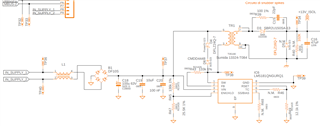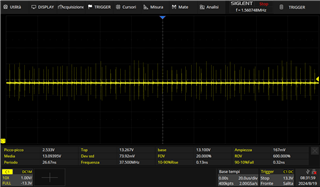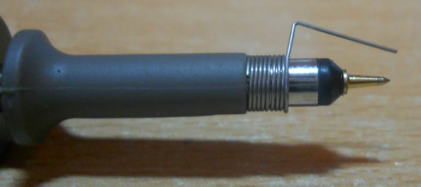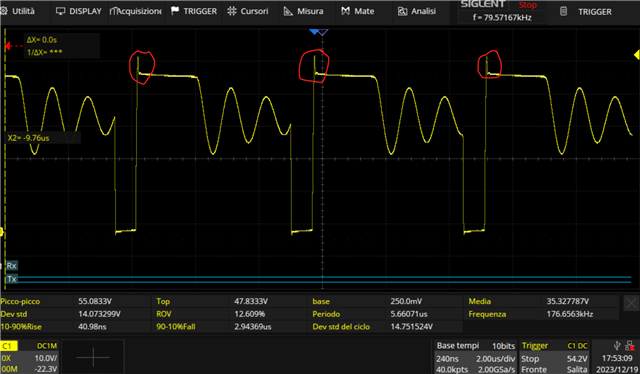Tool/software:
Hi Ti Team,
we are using LM5181 to create a 13V DC isolated output from a 24V AC input.
From the first test on the board I see that the circuit works quiet well (I can measure 13V output) but capturing the waveform on SW pin 1 of LM5181 It seems that the snubber circuit (R39-C15, suggested by WeBench) doesn't suppress the ringing of this pin.
I attached the waveform measured on SW pin1, the 13V output and the circuit schematic.
Can you help me on improving the snubber performance?
 Thank you
Thank you
Alessandro







